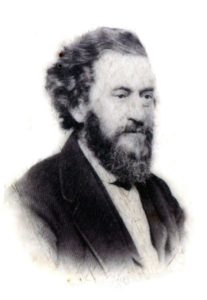
John Henry Heyser
After Captain William Heyser II’s death the land is passed down to his son William Heyser III, who then in 1842 splits the property in 2 and gives 206 acres to his son George Heyser and 170 acres containing the park land to his son John Henry Heyser. The Heyser family became one of the more prominent families in the growing town of Hagerstown and grew very wealthy. In 1843 after years of courting, John Henry then 30, finally marries the stunningly beautiful 20 year old Susan Fechtig. Susan had initially refused his proposals, but John Henry promised her anything her heart desired for the only thing his heart desired.
In 1846 John Henry Heyser, completes a 3 year project of building Susan’s dream home. A huge plantation house for his newlywed wife and their daughter Clara who was born during the construction. John names the home georgian-style mansion Cedar Lawn, for the line cedars Susan had insisted on planting. An avid appreciator of nature, Susan also insisted on saving much of the existing forest of Heyser’s Woods, helping protect and plant some of the 2,000 assorted trees that still exist in the park.
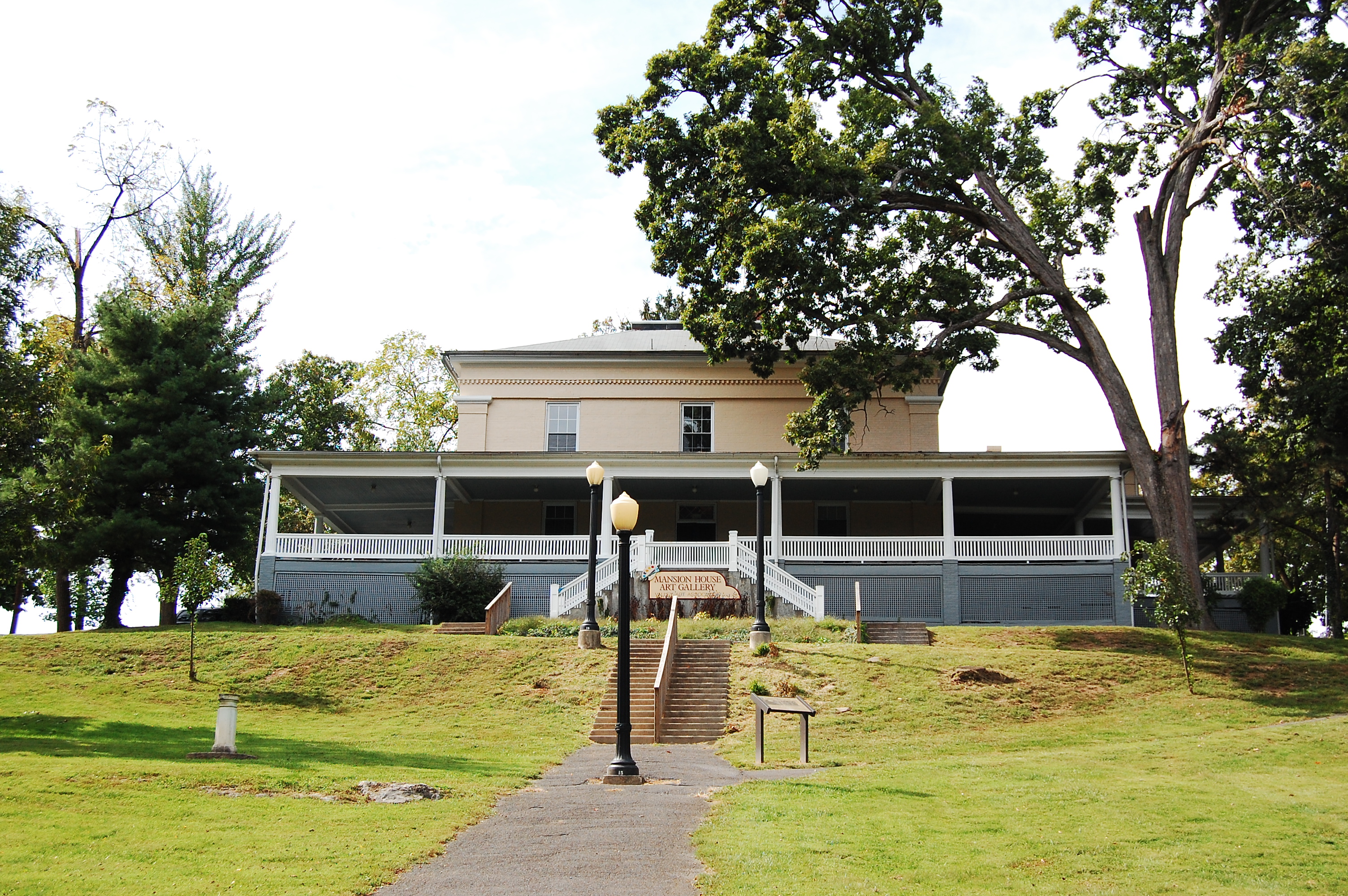
The massive house with built of native limestone and bricks. The bricks were made from the mud of the graceful lake, which the house overlooks. Cedar Lawn is now known as The Mansion House.
The Mansion house included a thriving greenhouse on the southern side, which provided the Heyser family with fresh produce, even in the cold, winter months. The unique oval-shaped hole in the center of the entryway ceiling once boasted a stained glass skylight that cast a soft glow through the home’s halls. The land around the main house supported an outdoor kitchen; living quarters for the Heyser’s servants; a large barn; outbuildings for the manufacture and storage of John Henry’s extensive homemade wine inventory; and a mill for grinding grain and sawing wood. The wine cellar north of the house and remnants of the cellar can still be seen in between the house and the long wooden stair case if you follow the path down from the parking lot. The mill stones can also still be seen embedded in the walkway around park circle.
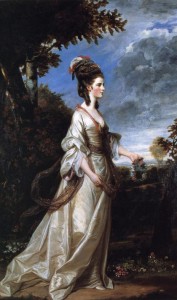
Susan Heyser, the Mistress of Cedar Lawn
The Heysers were always very generous with their beautiful lands and home, throwing galas and inviting friends for vacation at their home. The locals always had an open invitation to come to Heysers Wood’s for a respit from the growing city of Hagerstown. The Heysers were also supporters of the arts and allowed local pottery makers to gather clay from the lakes to make their wares. The locals coined the nickname “The Mistress of Cedar Lawn” for Susan Heyser who was renown for her hospitality and beauty.
On October 13th 1852, the first Hagerstown Fair is held in Heyser’s Woods and the whole town was invited. Two years later in 1854, John Henry Heyser allowed a portion of his land to be cleared by the Hagerstown Fair Association for a half-mile racetrack. As a result, horse racing became a popular pastime in Heyser’s Woods, where prizes were awarded to the best female riders. The land cleared for the fair is still cleared today and acts as baseball and softball fields located in the back of the park.
During the eight years the fair was held in city park, Susan would take on the roll as “Queen of the Fair” and hold court with her ladies in waiting similar to a medieval joust.
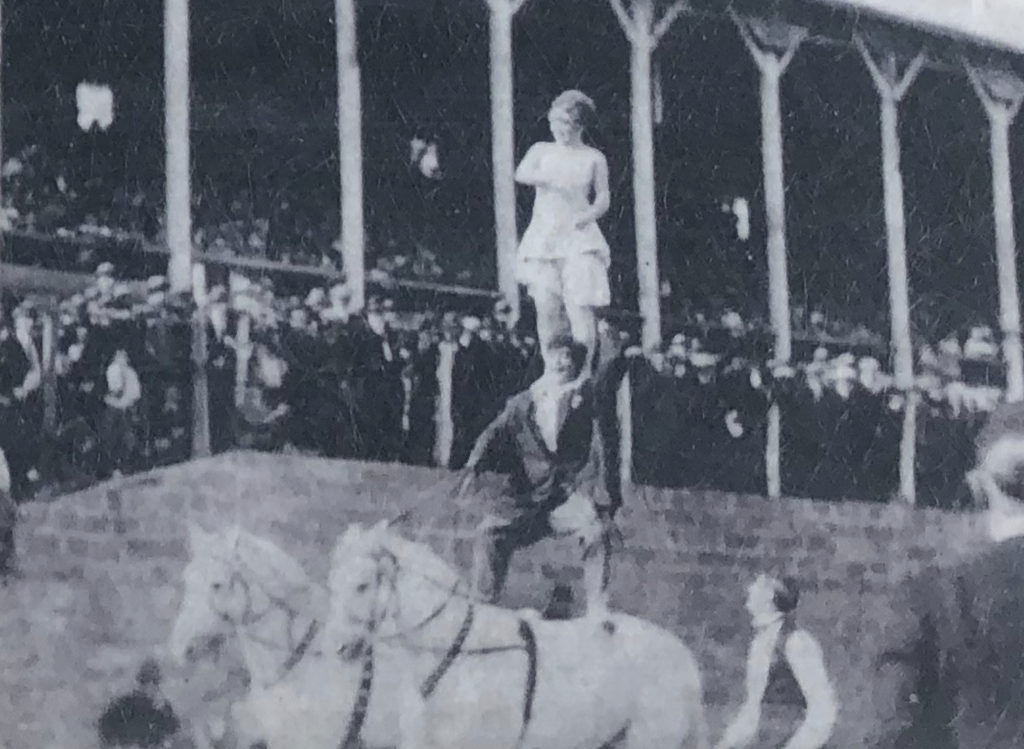
Riders perform tricks at one of the first fairs in Hagerstown
Even before the fairs were held, the Heysers had opened their property to picnickers and nature lovers. Cedar Lawn was known for many years a noted resort for the people of the town and a favorite place for eating dinner, drinking toasts, listening to orations and reading the Declaration of Independence on the Fourth of July, and the land is now thought of much the same way by Hagerstown residents and tourists alike.
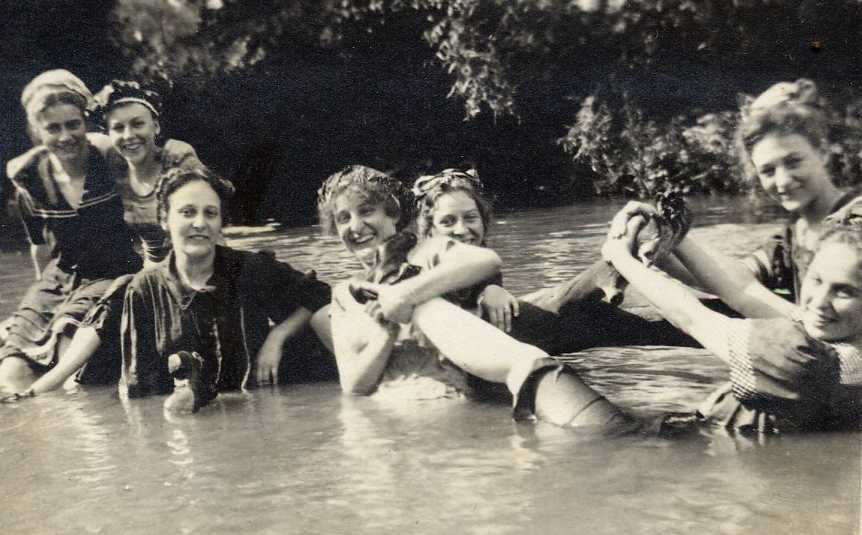
The Earnest family and friends bath in Heyser’s Woods Lake Hagerstown Maryland, late 1800s. Photo courtesy decedent Carolyn Converse Cooper, England.
John Henry Heyser became an expert horticulturist, turning part the fertile Heyser’s Woods in to a booming wine vineyard. The lumber from the cleared trees was milled on property and his wine became awarding winning, landing a prize for the “Best one-half dozen bottles of grape wine”.
Susan spent her time gardening, decorating their home and raising their 4 children. John Henry spent his leisure time as both an artist and a musician. He became an avid oil-painter who created many portraits and landscape scenes including an image of the Heyser children playing along the banks of one of the property lakes. His larger than life-sized painting, “John the Baptist” graces the walls of the Mansion House Art Gallery, sharing wall space with the work of contemporary artists. He also formed the Heyser Band, which played at the many parties and fairs held on the grounds. This time was known as the happiest of his life.
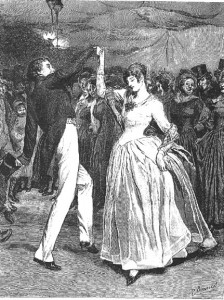
John Henry and Susan Heyser before her untimely death in 1861.
After the civil war breaks out, Heyser’s Woods is used for various campsites by both Confederate and Union forces though never at the same time. It is during this time the Hagerstown Fair was suspended and the fairgrounds buildings and fencing are destroyed by troops. In 1861, Union General Robert Patterson’s troops used Hagerstown as a base to attack Virginia troops in the Shenandoah Valley. Henry A. Cole’s Union Calvary camps at the park on its way to capturing General Longstreet’s ammunition train. This is also the year John Henry Heyser’s beloved wife, Susan, the Mistress of Cedar Lawn met her untimely death at age 35 in the Mansion House, during the birth of their 5th child. It is said her ghost still haunts the the Mansion House and the City Park, not wanting to let go of her precious Cedar Lawn.
In the Maryland Campaign of 1862, General James Longstreet’s command occupied the town while en route to the Battle of South Mountain and Antietam (The Bloodiest Battle of the American Civil War). In 1863, Hagerstown and Heyser’s Woods were the site of several military incursions and engagements as Gen. Robert E. Lee’s army invaded and retreated in the Gettysburg Campaign. Throughout the entire war, nearby homes acted as hospitals where private physicians and citizens of Hagerstown gave aid to men from both sides, as well as locals affected by the war.
In 1864, Hagerstown was invaded by the Confederate Army under Lt. Gen. Jubal Early. On Wednesday, July 6, Early sent 1,500 cavalry, commanded by Brig. Gen. John McCausland, into Hagerstown to levy a ransom for $200,000 and a large amount of clothing, in retribution for Federal destruction of farms, feed and cattle in the Shenandoah Valley. McCausland misread the amount, instead collecting only $20,000 allowing Hagerstown to get off easy and be preserved for visitors today. This is in contrast to neighboring Chambersburg, Pennsylvania, which McCausland completely razed to the ground on July 30 when the borough failed to supply the requested ransom of $500,000 in U.S. currency, or $100,000 in gold.
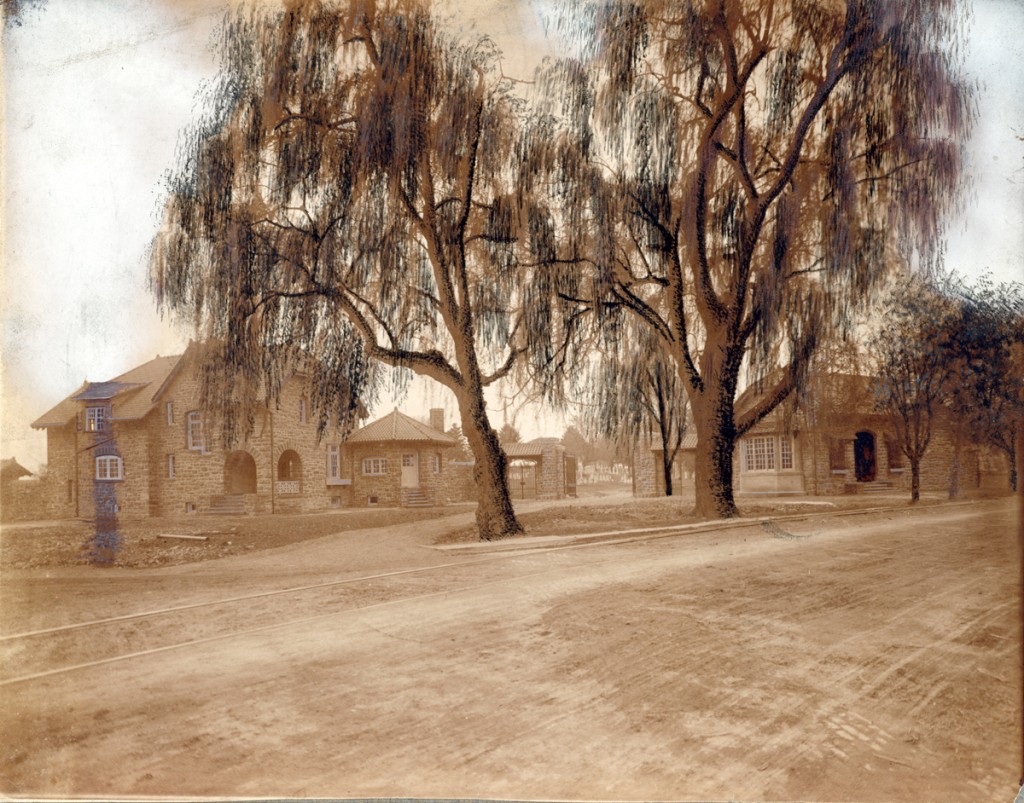
Rose Hill Cemetery, Hagerstown Maryland home of the Washington Confederate Cemetery where 2,800 Confederate Soldiers are buried. Photo shows the dirt road and has trees drawn on the negative.
Following the war, in 1872 Maryland and Virginia cooperated to re-inter Confederate dead from their impromptu graves to cemeteries in Hagerstown, Frederick and Shepherdstown, West Virginia. Roughly 60% however, remained unidentified. In 1877, 15 years after the Battle of Antietam, also known as the Battle of Sharpsburg, approximately 2,800 Confederate dead from that battle and also from the battles on South Mountain were re-interred in Washington Confederate Cemetery, within nearby Rosehill Cemetery less than a mile from the Historic City Park.
Following the war, John Henry Heyser purchases Hagerstown’s first steam engine to increase revenues at his water-powered saw mill and extensive vineyards on the property. His grapevines were aesthetically organized into the shape of a wheel, with spokes running toward a centrally located watchtower from which the grower could survey his property. He stored thousands of bottles of his wine in his wine cellar located in Hagerstown City Park.
While traveling on business in Florida in 1881, John Henry was murdered during an attempted mugging. His body brought home to Cedar Lawn and he was buried next to his wife in Rosehill Cemetery, walking distance to the house. Even though 20 years had past since her death, it is said he never recovered from it nor loved again. It is also said his ghost searches the park for his beloved.
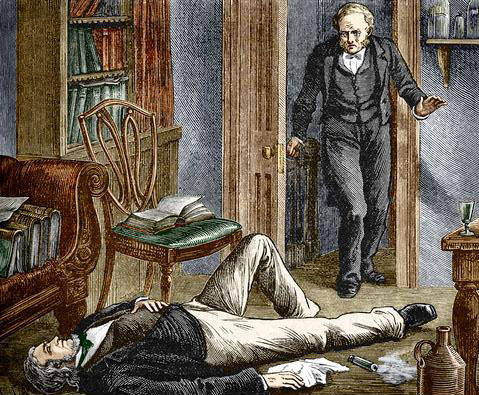
John Henry Heyser’s murder at the age of 68. Though over 20 years passed since the death of his beloved wife, Susan Heyser, John Henry never remarried.
The estate passed down to the Heyser’s children who sold the property to the local Armstrong brothers ending the 4 generation ownership of the land. William and Alexander Armstrong then called the land Armstrong-Hammond Farm. Nine years later in 1890 the West End Improvement Company purchased the land starting the park’s time for Industrial Age. Continue reading about the park history by clicking here.
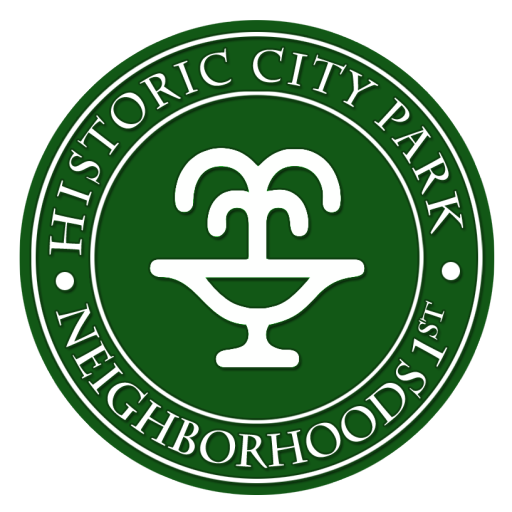
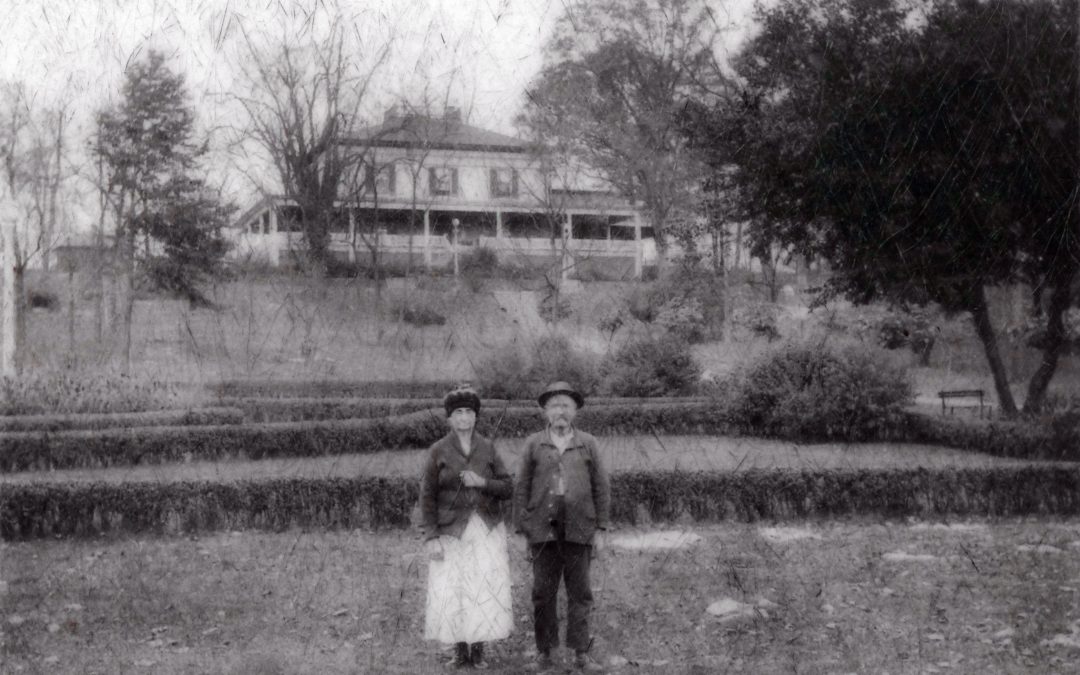
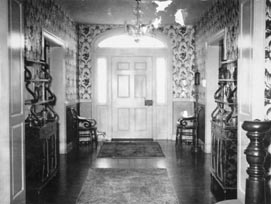
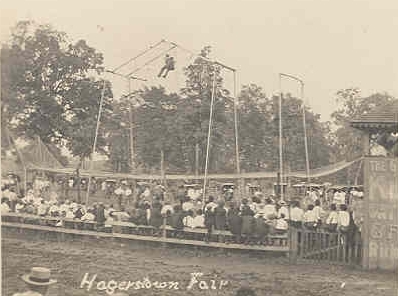
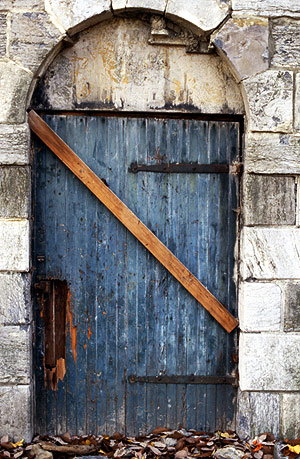
 Hagerstown City Park is known as America's 2nd most beautiful park. The first most beautiful being Central Park in New York City. The park was designed by landscape architect George Burnap who helped design some of the landscapes in Central Park.
Hagerstown City Park is known as America's 2nd most beautiful park. The first most beautiful being Central Park in New York City. The park was designed by landscape architect George Burnap who helped design some of the landscapes in Central Park.